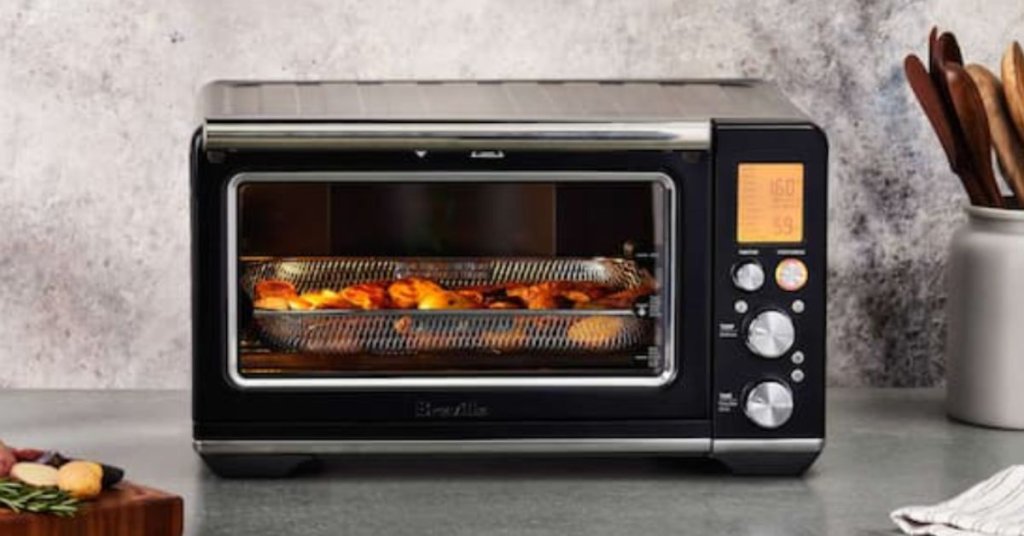When I first got my microwave oven, I was amazed at its ability to quickly heat up my food. It felt like magic – simply place the plate inside, press a few buttons, and within minutes, my meal would be piping hot and ready to eat.
However, as I continued to use my microwave, I started to wonder about its power consumption. How much energy does it actually use? And what impact does it have on my electricity bill?
In this article, I will delve into the world of microwave ovens and help you understand their energy usage.
Understanding Microwaves: How They Work
Before we dive into the power consumption of microwave ovens, let’s take a moment to understand how they work. Microwaves use electromagnetic waves to heat food. These waves cause the water molecules within the food to vibrate, generating heat in the process. The heat is then transferred to the rest of the food, effectively cooking it from the inside out.

The Power Rating of Microwaves
Microwave ovens come with a power rating, usually measured in watts. This rating tells you how much power the microwave consumes during operation. The higher the wattage, the more powerful the microwave, and consequently, the faster it can cook your food. The power rating can typically range from 600 watts for smaller, less powerful models to over 1,200 watts for larger, more robust models.
Calculating Power Consumption
To understand the energy usage of a microwave oven, we need to consider two factors: the power rating and the duration of usage. The formula for calculating power consumption is straightforward: Power Consumption (in kilowatt-hours) = Power Rating (in watts) x Time (in hours).
For instance, let’s say you have a microwave oven with a power rating of 1,000 watts, and you use it for 30 minutes. The calculation would be as follows:
- Power Consumption = 1,000 watts x 0.5 hours
- Power Consumption = 500 watt-hours
- Power Consumption = 0.5 kilowatt-hours (kWh)
By using this formula, you can determine the energy usage of your microwave oven based on its power rating and the duration of usage.
Factors Affecting Power Consumption
While the power rating and duration of usage are two primary factors influencing power consumption, there are a few other factors to consider. These include:
- Cooking Mode: Microwaves often have multiple power settings, allowing you to adjust the cooking intensity. Higher power levels will consume more energy.
- Cooking Time: The longer you use the microwave, the more energy it will consume. Opting for shorter cooking times can help reduce energy consumption.
- Food Type: Certain foods require more energy to cook than others. Foods with high water content, such as soups or vegetables, tend to heat up more quickly and use less energy compared to denser or more solid foods.
Energy Efficiency: Tips to Reduce Consumption
Now that we understand the factors influencing power consumption let’s explore some tips to help reduce energy usage while using a microwave oven:
- Opt for a lower power setting: Using a lower power setting can reduce the energy consumed by your microwave oven. When possible, try cooking at 50% or 70% power to achieve the same results while using less energy.
- Use the microwave for smaller tasks: If you only need to warm up a cup of milk or defrost a small portion of food, consider using the microwave instead of the oven or stovetop. Microwaves are generally more energy-efficient for smaller tasks.
- Cover your food: Covering your food while microwaving helps retain heat and speeds up the cooking process. This can result in less energy consumed overall.
- Choose the right-sized microwave: It’s essential to choose a microwave that suits your needs. Opting for a smaller oven if you have limited usage can save energy compared to larger, high-power models.
- Keep the microwave clean and maintained: A clean and well-maintained microwave will operate more efficiently, reducing energy usage. Regularly cleaning the interior and ensuring proper ventilation can help optimize its performance.
Conclusion
Microwave ovens offer a convenient and efficient way to heat up our food. While they do consume energy, understanding their power consumption can help us make conscious decisions to minimize our carbon footprint and keep our electricity bills in check.
By considering factors such as power rating, duration of usage, and implementing energy-efficient practices, we can ensure that our microwaves are not only convenient but also environmentally friendly. So, go ahead and enjoy the speed and convenience of your microwave oven while being mindful of its energy consumption.
